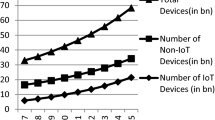Abstract
This paper relates to development of a novel generic transceiver module for software defined radio (SDR) built using graphical user interface language LabVIEW. The main advantage of the module is that it is built entirely on the user input interface where the users get the flexibility to change any parameters according to their needs and the generic module supports there digital modulation schemes with two forward error correction coding techniques where the user has the flexibility to decide about the same. The SDR module has been fully implemented and it has the ability to navigate over a wide range of frequencies with programmable channel bandwidth and modulation characteristics. The module has been tested on real time data, text and image transmissions using the test jig for Wi-Fi module. With the help of the Wi-Fi hardware test jig it has been proved that the signal transmitted has been recovered with very low probability of error at the destination. A plot between bit error rate (BER) and the signal to noise ratio shows that a low BER has been achieved using this design. The novelty of this design is that the module auto identifies the best available digital multistate modulation scheme i.e. M-ary quadrature amplitude modulation, M-ary frequency-shift keying, M-ary phase-shift keying for the selected input.










Similar content being viewed by others
References
Martinek, R., Al-Wohaishi, M., & Zidek, J. (2010). Software based flexible measuring systems for analysis of digitally modulated systems. In Conference proceedings: The 9th Roedunet international conference, RoEduNet, Sibiu, pp. 397–402.
Bhuptani, M., & Moradpour, S. (2005). RFID field guide: deploying radio frequency identification systems. Upper Saddle River, NJ: Sun Microsystems/Prentice Hall PTR.
Han, S., Lim, H., & Lee, J. (2007). An efficient localization scheme for a differential-driving mobile robot based on RFID system. IEEE Transaction on Industrial Electronics, 53(5), 3362–3369.
Ke-Lin, D., & Swamy, M. N. S. (2010). Wireless communication systems, from RF subsystems to 4G enabling. Cambridge: Cambridge University Press.
Bjorkqvist, J., & Virtanen, S. (2006). Convergence of hardware and software in platforms for radio technologies. IEEE Communication Magazine, 44(11), 52–57.
Domdouzis, K., & Kumar, B. (2007). Radio-frequency identification (RFID) applications: A brief introduction. Advaned Engineering Informatics, 21(4), 350–355.
Hannan, M. A., Hussain, A., Samad, S. A., Mohamed, A., Wahaband, D. A., & Kamal, A. I. (2006). Development of an intelligent safety system for occupant detection, classification and position. International Journal of Automotive Technology, 7(7), 827–832.
Weisand, S., Sarma, S. (2004). Seurity and privacy aspets of low-cost radio frequency identification systems. In Security in pervasive computing: The 1st international conference. Boppard, Germany.
Islam, M., Hannan, M. A., Samad, S. A., & Hussain, A. (2010). QAM in software defined radio for vehicle safety application. Australian Journal of Basic and Applied Siene, 4(10), 4904–4909.
Haghighat, A. (2002). A review on essentials and technical challenges of software defined radio. In Proceedings of the IEEE military communications conference. Anaheim, CA, pp. 377–382.
Marriwala, N., Sahu, O. P., & Vohra, A. (2014). LabVIEW based design implementation of M-PSK transceiver using multiple forward error correction coding technique for software defined radio applications. Journal of Electrical and Electronic Engineering., 2(4), 55–63. doi:10.11648/j.jeee.20140204.1.
Marriwala, N., Sahu, O. P., & Vohra, A. (2013). 8-QAM software defined radio based approach for channel encoding and decoding using forward error correction. Wireless Personal Communication., 72(4), 2957–2969. doi:10.1007/s11277-013-1191-z.
Sadiku, M. N. O., & Akujuobi, C. M. (2004). Software-defined radio: A brief overview. IEEE Potentials Journal. 14–15.
Mitola, J. (1995). The software radio architecture. IEEE Communication Magazine, 33(5), 26–38.
Bryan, D. (1995). QAM for terrestrial and cable transmission. IEEE Trans. Consumer Electronics, 41(3), 383–391.
Islam, M., Hannan, M. A., Samad, M. A., & Hussain, A. (2009). Modulation technique for software defined radio application. In CISST’09 proceedings of the 3rd WSEAS international conference on circuits, systems, signal and telecommunications, pp. 179–182.
Baines, R., & Pulley, D. (2003). A total cost approach to evaluating different reconfigurable architectures for base band processing in wireless receivers. IEEE Communications Magazine, 41(1), 105–113.
Jignesh, O., Patel, Y., Trivedi, P., Ranpura, N., Patel, Z., Dalal, U. et al. (2010). Optimized configurable architecture of modulation techniques for SDR applications. In Proceedings of the international conference on computer and communication engineering. Kuala Lumpur.
Bhalhandra, B. G., & Aldar, S. D. (2010). Performance improvement by hanging modulation methods for software defined radios. International Journal of Advanced Computer Science and Applications, 1(6), 72–79.
Author information
Authors and Affiliations
Corresponding author
Rights and permissions
About this article
Cite this article
Marriwala, N., Sahu, O.P. & Vohra, A. Novel Design of a Low Cost Flexible Transceiver Based on Multistate Digitally Modulated Signals Using Wi-Fi Protocol for Software Defined Radio. Wireless Pers Commun 87, 1265–1284 (2016). https://doi.org/10.1007/s11277-015-3052-4
Published:
Issue Date:
DOI: https://doi.org/10.1007/s11277-015-3052-4




